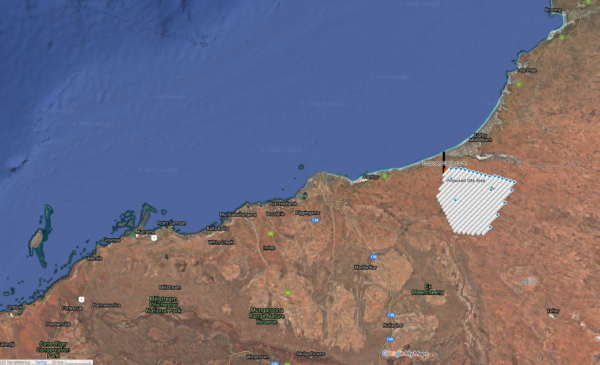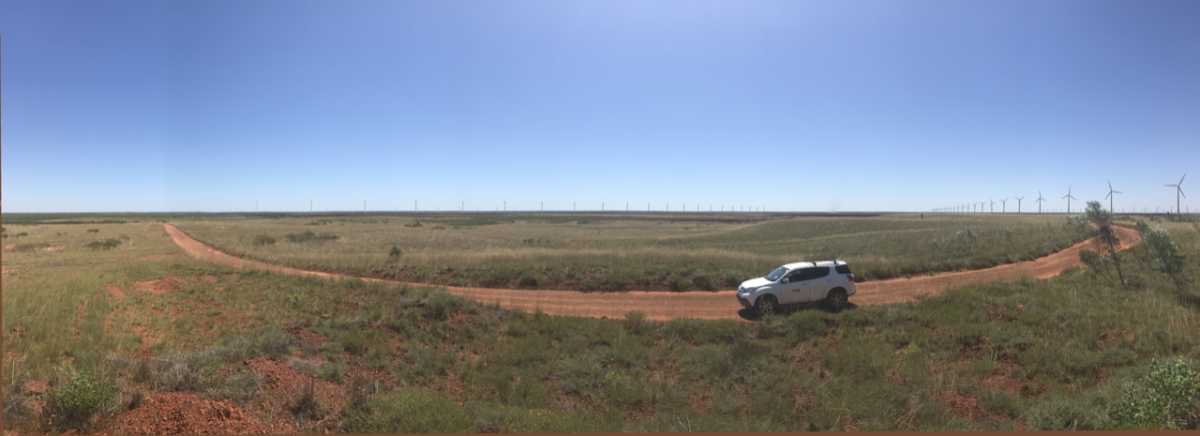On Friday, the proposed 26 GW, $50 billion Asian Renewable Energy Hub (AREH), the world’s largest new energy generator, destined to establish Australia as a major global producer and exporter of green energy in the form of hydrogen, was granted Major Project Status by the Commonwealth Government.
The AREH will harness the world-class wind and solar resources of Western Australia’s East Pilbara region, dedicating up to 23 GW of capacity for production of green hydrogen and green ammonia; and providing up to 3 GW of energy production to local Pilbara users such as mining and mineral processing operations.
Major Project Status recognises the strategic significance of a project for Australia. In this case, AREH dovetails with the Government’s Technology Investment Roadmap, which highlights hydrogen as a priority technology for development; plus the project is slated to support more than 20,000 direct and indirect jobs during its 10-year construction, followed by thousands of permanent jobs as operations come online from 2027.
“The Asian Renewable Energy Hub has the potential to transform the East Pilbara and neighbouring Broome shire, and to contribute to a major new export industry for Australia,” said Karen Andrews, the Federal Minister for Industry, Science and Technology, in a joint statement with the Minister for Energy and Emissions Reduction, Angus Taylor.
Taylor said, “Projects like the Asian Renewable Energy Hub will help us achieve our ‘H2 under $2 goal,” alluding to the price point of $2 a kilogram, at which hydrogen becomes competitive with other forms of energy generation deployed at scale in the energy system.
The importance of Major Project Status
The conferring of Major Project Status provides developers with support from the Major Projects Facilitation Agency, which provides a single entry point for Commonwealth Government approvals and coordination with state or territory approvals.
In particular, it will help the AREH navigate recently tightened Foreign Investment Review Board approvals, creating a pathway for international investment.
Attaining the Status symbol, is the project’s second major milestone in a week, coming as it does in the wake of the Western Australian Government granting environmental approval for the 15GW first phase of the AREH.
The two confirmations resulted in AREH developers moving quickly to submit their application for approval of the second stage of the project, including their plans to expand its capacity to 26 GW, which will see wind turbines and solar modules installed across some 6,500 square kilometres of desert.

Image: AREH/Google Maps
Sun and wind to benefit remote communities
Native title over the land belongs exclusively to the Nyangumarta People who have been engaged with the project since its inception in 2015. As traditional owners of the site, and partners in the project, they expect to develop skills, jobs and revenue to benefit their communities over the anticipated more than 50-year lifetime of the AREH.
The consortium of major developing partners in the project combines the expertise of Hong Kong-based Intercontinental Energy, the world’s largest green hydrogen developer; CWP Renewables, an established developer and investor in Australian renewable energy projects; Vestas a leading wind turbine manufacturer with 117 GW of wind turbines installed across 81 countries; and private investment company Pathway Investments.
Alex Hewitt, Founder and Director of CWP Renewables said on Friday, “We are so pleased to have the confidence and support of the State and Federal Governments for our grand vision to establish a new green hydrogen-based industrial sector in Australia, drawing on Australia’s many natural advantages.”
In particular, he cited the country’s stable investment environment, an innovative and flexible labour force, and its world-leading renewable resources. In its East Pilbara site, AREH has identified a particularly advantageous complementary blend of daytime solar and high wind speeds in the morning, evening and night, which it says enables competitively priced and predictable renewable generation 365 days a year.
Helping to decarbonise energy intensive industries
“We will be able to produce green fuels that are cost competitive with fossil fuels,” said Alex Tancock, Founder and Managing Director of Intercontinental Energy, who continued, “This will speed up the essential decarbonisation of energy intensive sectors such as shipping, aviation, resource extraction and chemicals.”
AREH will make hydrogen from seawater using electrolysers powered by its renewable output — up to 100 TWh of electricity at full production — for large-scale production of green-hydrogen products to supply domestic and export markets.
The two recent major milestones mean the developers can proceed to detailed design work and begin the next stage of discussions with offtakers and investors.
Achieving Major Project Status, “sends a strong signal to everyone involved … that our project is at the forefront of an emerging green hydrogen industry for Australia, and the opening of a massive new export market to the fast-growing Asian economies to our north”, said AREH Project Director, Brendan Hammond.
This content is protected by copyright and may not be reused. If you want to cooperate with us and would like to reuse some of our content, please contact: editors@pv-magazine.com.









5 comments
By submitting this form you agree to pv magazine using your data for the purposes of publishing your comment.
Your personal data will only be disclosed or otherwise transmitted to third parties for the purposes of spam filtering or if this is necessary for technical maintenance of the website. Any other transfer to third parties will not take place unless this is justified on the basis of applicable data protection regulations or if pv magazine is legally obliged to do so.
You may revoke this consent at any time with effect for the future, in which case your personal data will be deleted immediately. Otherwise, your data will be deleted if pv magazine has processed your request or the purpose of data storage is fulfilled.
Further information on data privacy can be found in our Data Protection Policy.